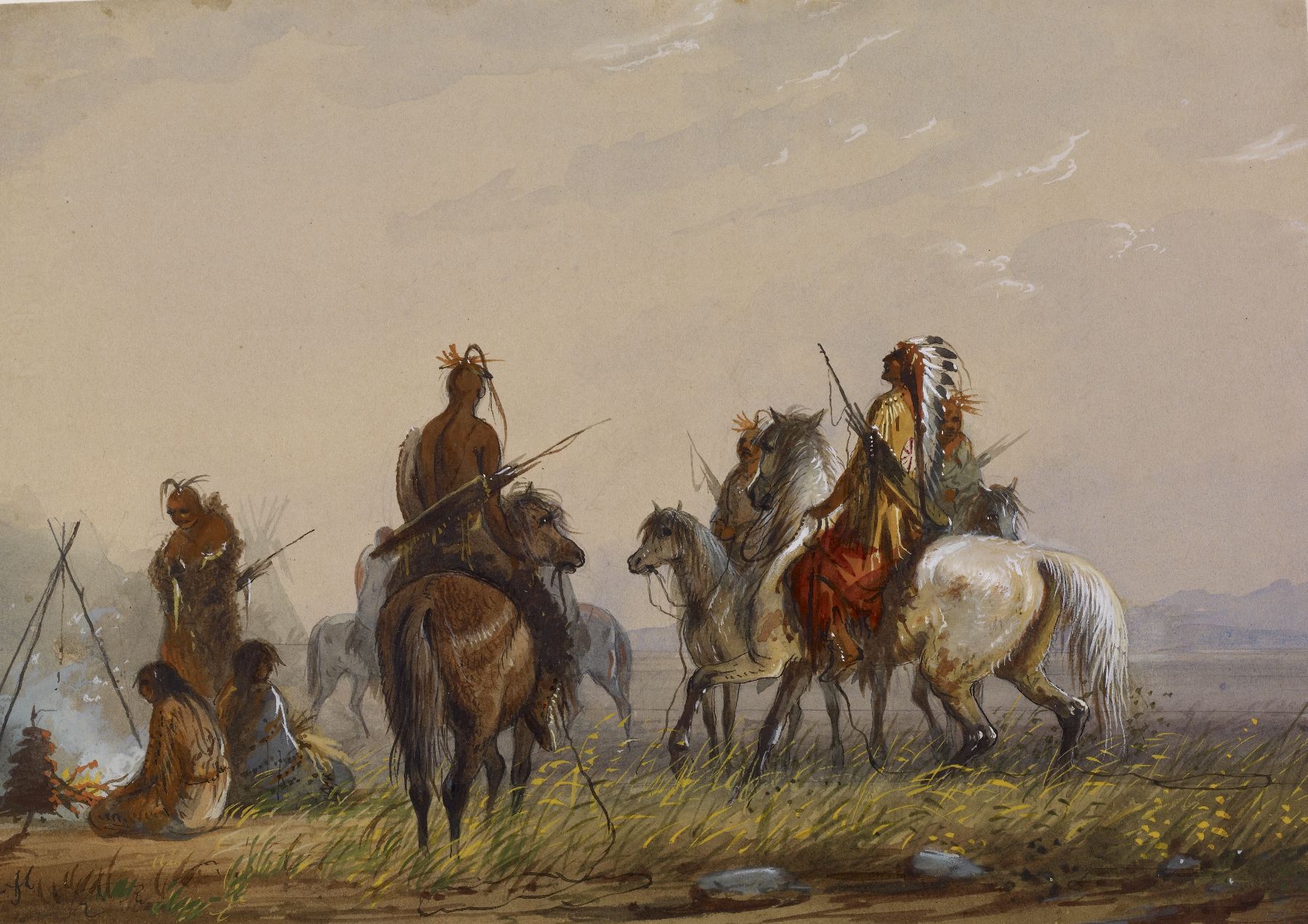Expedition to Capture Wild Horses -Sioux
(18th and 19th Centuries )
Extracts from Alfred Jacob Miller’s original text, which accompanied his images of Native Americans, are included below for reference. These words, which shaped how Miller’s contemporaries viewed the watercolors, reveal the racism and sexism embedded in 19th-century exploration and colonization of the western part of what is today the United States.
"As an Indian's riches is generally rated by the number of horses he possesses, and these (by various casualties) sometimes lessen in number, either through his war parties, stolen by othe tribes, or natural deaths, it behooves him at stated intervals to call around him his 'good men and true,' with lariats and tackle in good order, and set out on a foray to catch these valuable animals. In doing this he does not confine himself to the strict letter of the wild-horse question; for should he meet with any of his old enemies the Crows, or Camanches, he does not hesitate to turn and do battle with them, conquer them if possible, take their horses, and strip them of everything. Why should he trouble himself to look after wild horses, when tame ones may be had at the trifling cost of a little pounding? No! no!- all are fish that comes to his net; - and this creed or its equivalent he firmly believes in." A.J. Miller, extracted from "The West of Alfred Jacob Miller" (1837).
In July 1858 William T. Walters commissioned 200 watercolors at twelve dollars apiece from Baltimore born artist Alfred Jacob Miller. These paintings were each accompanied by a descriptive text, and were delivered in installments over the next twenty-one months and ultimately were bound in three albums. Transcriptions of field-sketches drawn during the 1837 expedition that Miller had undertaken to the annual fur-trader's rendezvous in the Green River Valley (in what is now western Wyoming), these watercolors are a unique record of the closing years of the western fur trade.
Inscription
Provenance
Provenance (from the French provenir, 'to come from/forth') is the chronology of the ownership, custody, or location of a historical object. Learn more about provenance at the Walters.
William T. Walters, Baltimore, 1858-1860, by commission; Henry Walters, Baltimore, 1894, by inheritance; Walters Art Museum, 1931, by bequest.
Geographies
USA (Place of Origin)
Measurements
H: 8 7/16 x W: 12 in. (21.4 x 30.5 cm)
Credit Line
Commissioned by William T. Walters, 1858-1860
Location in Museum
Not on view
Accession Number
In libraries, galleries, museums, and archives, an accession number is a unique identifier assigned to each object in the collection.
In libraries, galleries, museums, and archives, an accession number is a unique identifier assigned to each object in the collection.
37.1940.169



